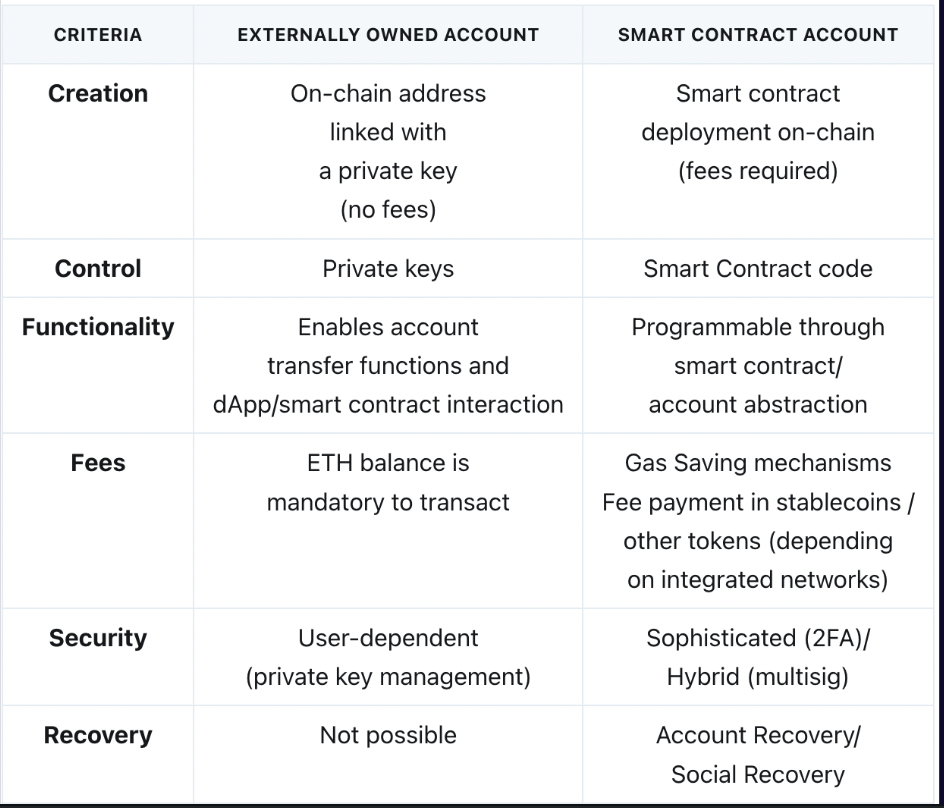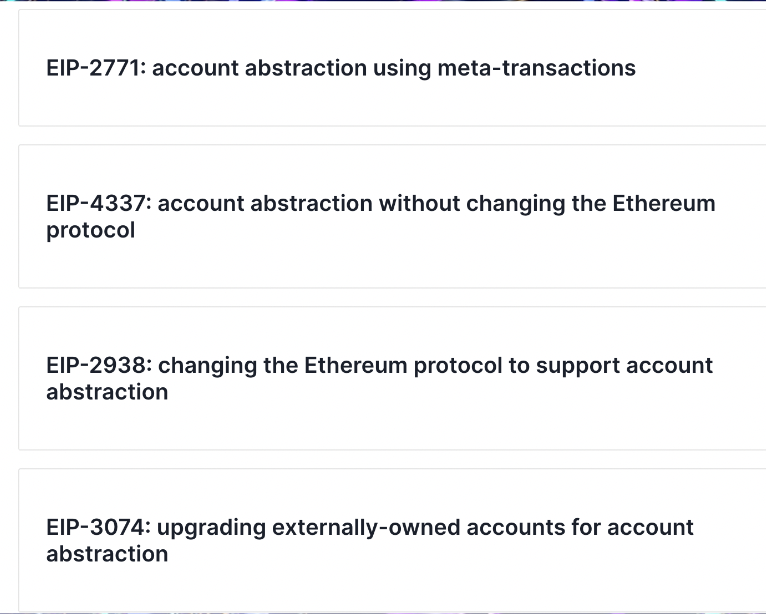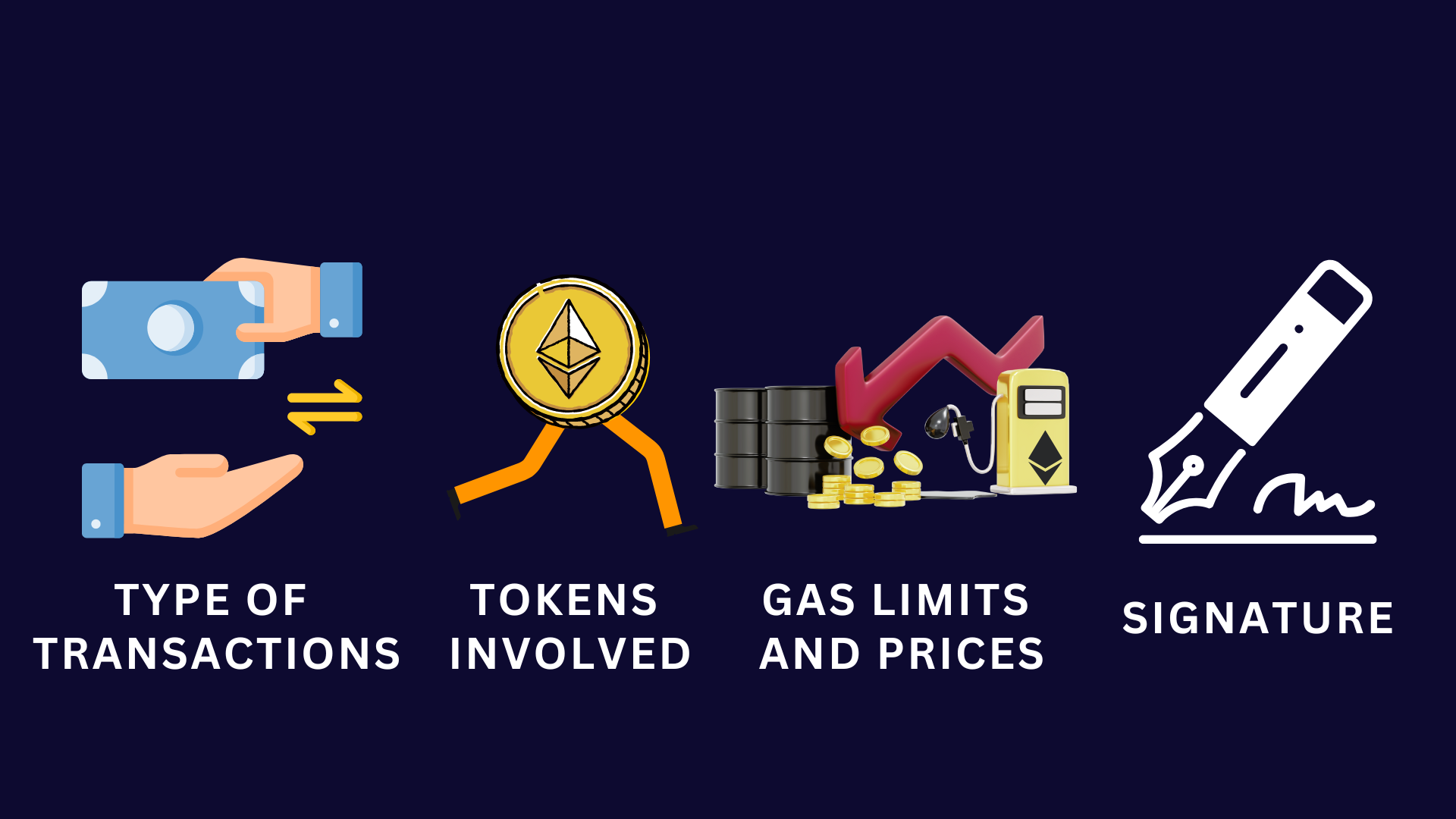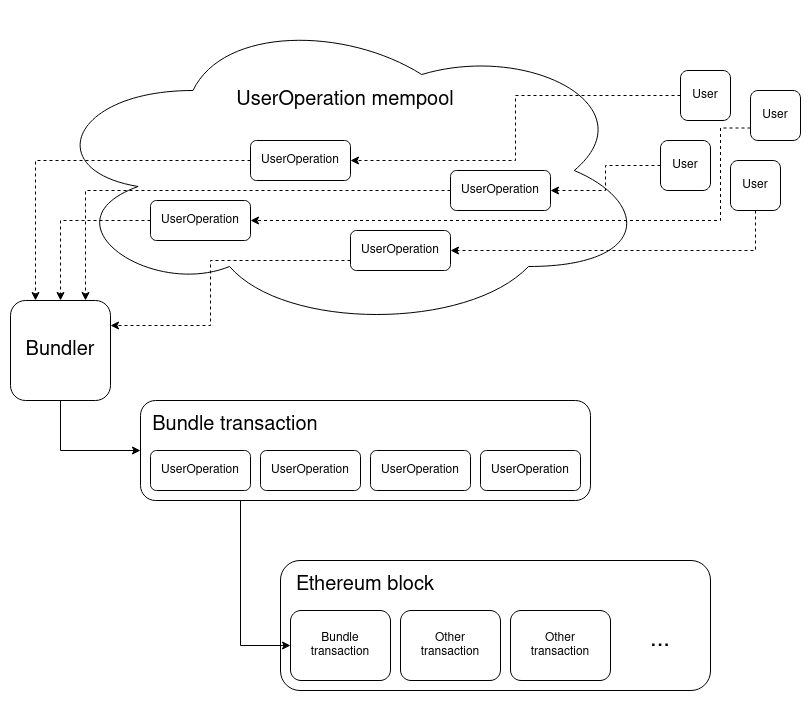2023-06-30
Account abstraction is a fancy term for letting users customize how they interact with Ethereum. Right now, you need an externally owned account (EOA) to do anything on Ethereum, like sending transactions or executing smart contracts. An EOA is basically a pair of keys: a public key that identifies your account and a private key that lets you control it. You need to keep your private key safe and secret, or else you might lose access to your funds or get hacked by some evil hacker.
This account model limits many wallet providers to offering users only a seed phrase for account recovery but the seed phrase is prone to being forgotten or stolen by users. Another pain point is the complexity of interacting with a smart contract. Each interaction demands a signature, leading to rapidly increasing gas fees that can become expensive. Lastly, the conventional EOA model poses limitations on the innovation of wallet providers, while workarounds using smart contracts unlock more use cases but bring new risks.
But what if there was a simpler and more streamlined approach? Imagine being able to engage with Ethereum using a smart contract wallet that offers customized security, recovery options, and user experience based on your preferences. What if you could pay gas fees with any token, batch transactions together, or even delegate account management to someone else?
Let's start by understanding what an account represents in Ethereum. An account is a unique identifier that holds some ether (the native currency of Ethereum) and can send transactions to the network. There are two types of accounts in Ethereum: externally owned accounts (EOAs) and contract accounts. EOAs are controlled by private keys, secret codes only you know and can use to sign transactions. Contract accounts are controlled by smart contracts, which are pieces of code that run on the Ethereum network and can execute complex logic and store data.

The problem with this distinction is that it limits how users can interact with Ethereum. For example, EOAs have to always keep an ETH balance to pay for gas fees, which can be inconvenient and expensive. Contract accounts cannot initiate transactions by themselves, which makes them harder to program and use.

That's where account abstraction comes in. With account abstraction, you can use a smart contract wallet instead of an EOA. A smart contract wallet is a special type of smart contract that can initiate transactions by itself, using any logic that you program into it. For example, you can have a smart contract wallet that requires two out of three signatures from different devices or people to approve a transaction, one that automatically sends a portion of your income to your favorite charity or one that lets you pay gas fees with any token you want. The possibilities are endless!

Account abstraction also makes it easier to onboard new users to Ethereum, because they don't need to worry about things like seed phrases, private keys, gas fees, or transaction formats. They can just use a smart contract wallet that handles all these details for them and provides them with a simple and user-friendly interface. They can also switch between different smart contract wallets without changing their account address, so they can always use the best wallet for their needs.
There are different approaches to implementing account abstraction on Ethereum, each with its own trade-offs and challenges. Some of them require changes to the Ethereum protocol, while others rely on extra-protocol solutions.

One of the most prominent proposals for account abstraction is ERC-4337 which does not require any consensus changes but uses off-chain messages called "UserOperations".
User operations are like instructions that tell the smart account what action to take on behalf of the user. A UserOperation contains various details, such as the type of transaction, the tokens involved, the gas limits and prices, and a signature to validate the transaction. These details help determine how the transaction should be processed. When a smart account sends a UserOperation, it joins a shared waiting area called the alt mempool along with other UserOperations.

Bundlers, which are similar to nodes that verify regular transactions, group these UserOperations together. They use a similar approach as mining or validator nodes to prioritize transactions where they can get the most benefit. Once bundled, the UserOperations pass through a designated "Entry Point." At this point, each UserOperation is checked and executed by invoking different functions. The beauty of UserOperations is that they can incorporate any kind of logic, allowing users to customize how they manage their accounts and funds.

Here are some highlights of what ERC-4337 could enable:
Wallet setup : No need to write down seed phrases, setting up your wallet is easy as a few clicks. Worry-free account recovery : Users don't have to worry anymore about losing their seed phrases, as multi-factor authentication and account recovery are now possible. User-friendly wallet functions : Users can enjoy a wide range of customized services, such as automatic payments, pre-approved transactions, and bundled transactions Better security : Enhanced security, Wallets can now be even more secure. Using wallets becomes easier and more user-friendly
However, it also has some drawbacks, such as: - Extra gas overhead for user operations compared to regular transactions - Increased complexity to the Ethereum ecosystem which could lead to errors and security vulnerabilities, potentially compromising the overall stability and security of the Ethereum network
Smart contract wallets are already available, but they need more improvements to become fully decentralized and permissionless. EIP-4337 is a proposal that doesn't require changes to Ethereum's core system, so it could be implemented relatively quickly.
And that's a wrap, folks! We've reached the end of our journey exploring Ethereum's account abstractions. To sum up, account abstraction is the magical power that lets you customize how you interact with Ethereum. No more conforming to the standard rules! With account abstraction, you can make Ethereum dance to your own tune. Imagine the freedom to unleash your creativity and tailor your Ethereum experience to fit your unique needs. It's like having a VIP backstage pass to the Ethereum universe, where you can shape your interactions like never before.
As always, we would love to hear your feedback! Please let us know your thoughts about our content, along with any suggestions for improvement through our Twitter account or Telegram channel.
Stay tuned for announcements of upcoming online events such as CryptoZombies Live Workshops and special guest online meetups.
Follow us on Twitter @CryptoZombiesHQ or signup to our mailing list or start a free course @ https://cryptozombies.io.